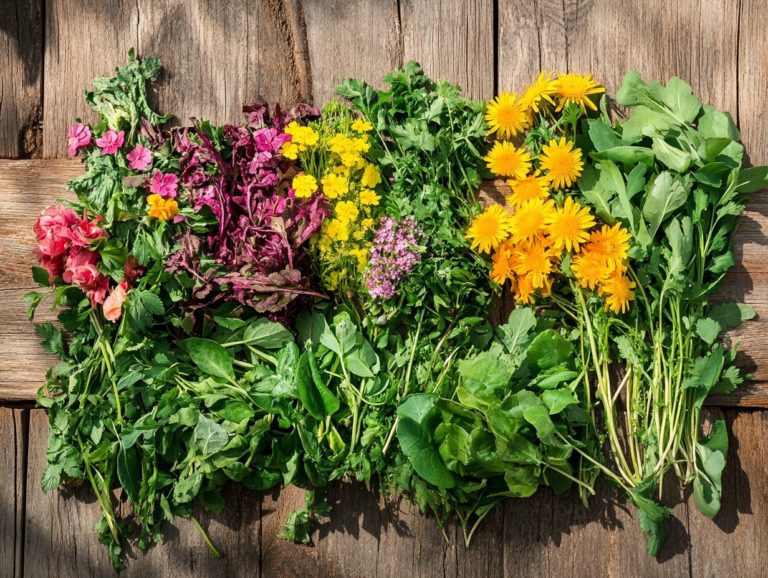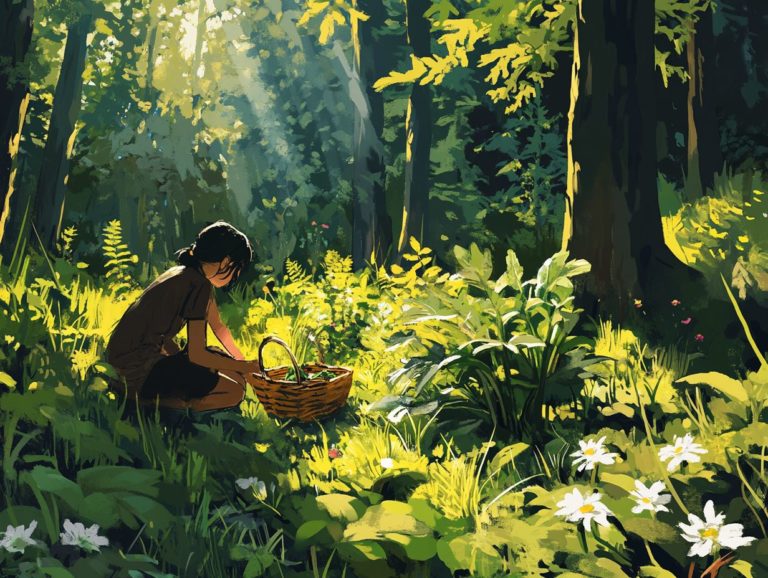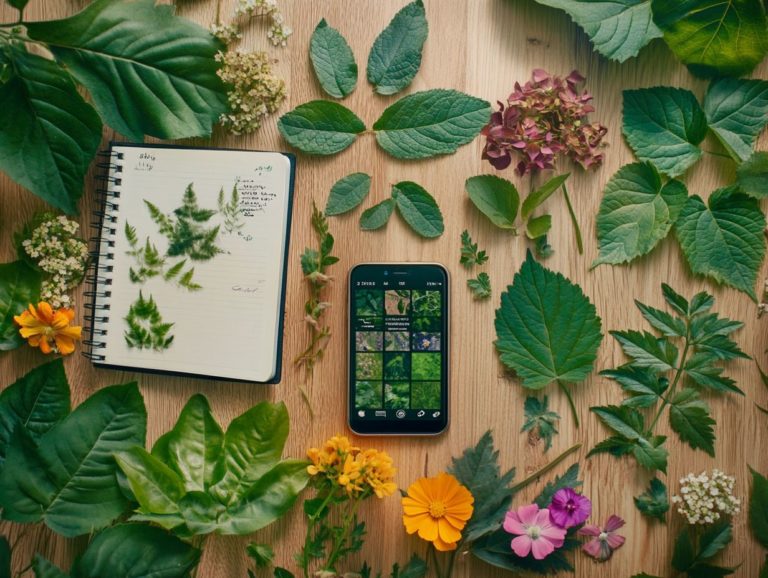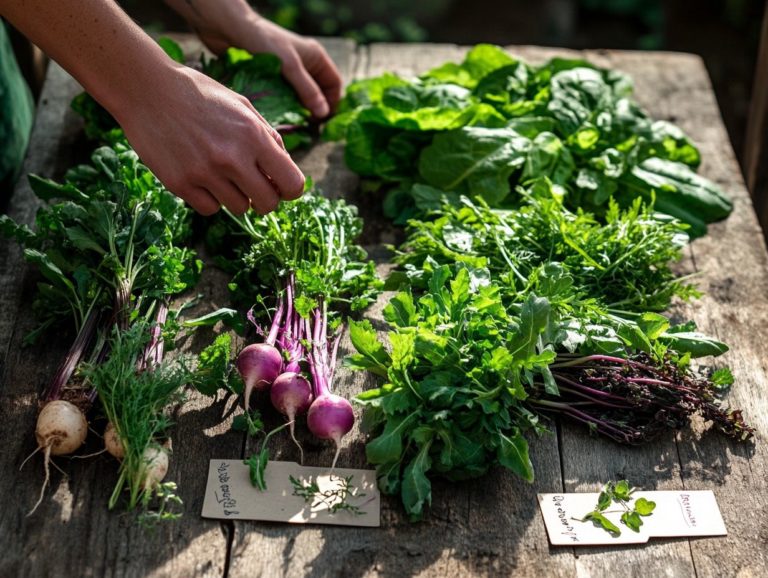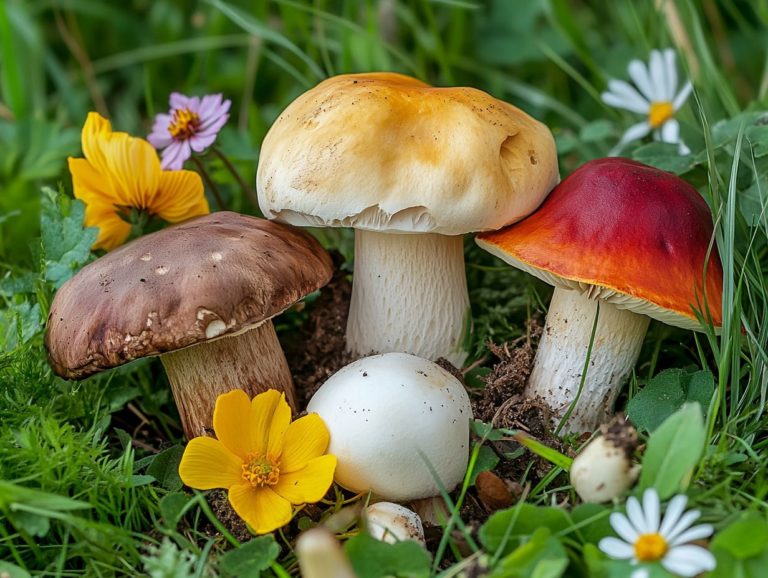5 Tips for Identifying Wild Herbs
Exploring the world of wild herbs is an exciting adventure that sharpens your skills while enhancing your knowledge and palate. These remarkable plants offer potential medicinal properties and culinary delights, presenting a treasure trove of benefits just waiting for you to uncover.
Identifying wild herbs is an enriching experience that requires a discerning eye and a bit of expertise to ensure your safety. Here are five essential tips to help you confidently recognize and utilize wild herbs, along with insightful details about their uses and necessary precautions, including foraging guidelines and safety considerations.
Dive in and unlock the bounty that nature has to offer!
Contents
- Key Takeaways:
- 1. Research Common Wild Herbs in Your Area
- 2. Take Note of Plant Characteristics
- 3. Use All Your Senses
- 4. Consult with Experts or Join Herb Identification Groups
- 5. Always Double Check Before Consuming
- What Are the Benefits of Identifying Wild Herbs?
- Frequently Asked Questions
- What are some tips for identifying wild herbs?
- Can I use an app to identify wild herbs?
- Are there any safety precautions to take when identifying wild herbs?
- What are some common mistakes to avoid when identifying wild herbs?
- Are there any specific tools I should use for identifying wild herbs?
- What should I do if I accidentally ingest a toxic plant while identifying wild herbs?
Key Takeaways:
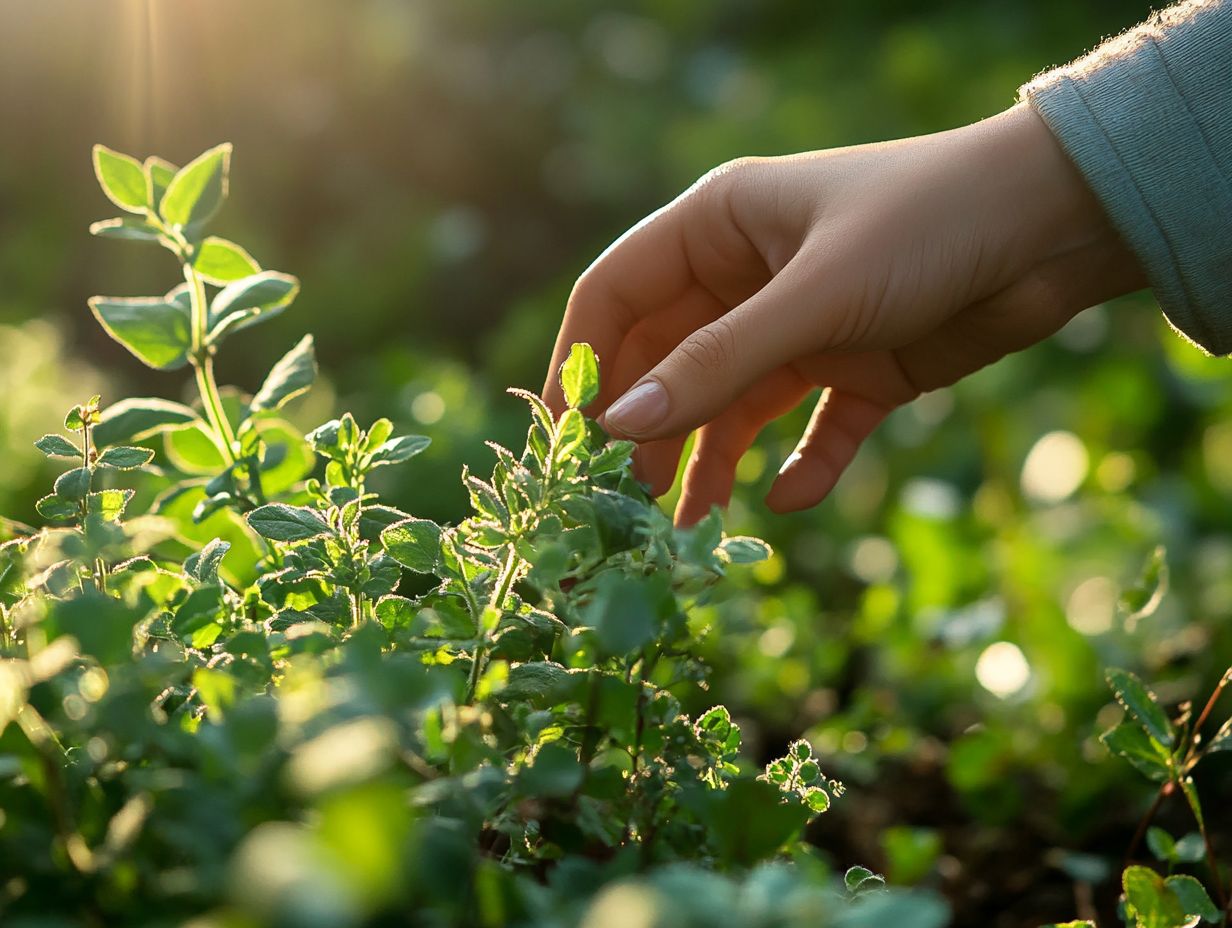
- Research and get to know common wild herbs in your area to identify them correctly.
- Use all your senses. Note plant characteristics like color, smell, and texture to assist you.
- Join local herb groups or ask experts for help to ensure accurate identification and learn about safety precautions.
1. Research Common Wild Herbs in Your Area
To excel in gathering food responsibly, take time to research the wild herbs around you. These plants provide essential nutrients and a range of culinary and medicinal benefits. Understanding the plants that grow in your area is crucial for your enjoyment and safety during foraging.
Connecting with a local plant expert can deepen your knowledge of edible plants and introduce you to a vibrant foraging community that shares invaluable insights.
Identifying local wild herbs can transform your diet by introducing vitamins, minerals, and flavors that might be missing from your typical grocery fare. For those enthusiastic about native plants, exploring 5 unique wild edibles you can find through community gardening initiatives, herbal courses, or plant collection can be a goldmine.
These programs promote sustainability and foster a profound connection to the environment while encouraging responsible harvesting practices and herb preservation.
As you participate, you ll gain firsthand experience, build relationships with like-minded individuals, and develop cooking skills through exciting recipe inspirations all while contributing to your well-being and the ecological health of your surroundings.
2. Take Note of Plant Characteristics
Observing plant characteristics is essential for accurate identification and helps you differentiate between edible plants and potentially harmful ones. This knowledge ensures a safer foraging experience, which is crucial for gathering food sustainably.
By noting specific leaf shapes whether broad, narrow, or lobed and the vibrant colors of flowers, you can easily distinguish between harmless plants and common weeds that might pose risks. For instance, the distinct yellow blooms of dandelions not only catch your eye but also indicate that their leaves are edible and perfect for adding a slightly bitter flavor to salads.
Understanding growth patterns, such as whether a plant sprawls or grows upright, can help you recognize familiar weeds that may actually be beneficial and can be harvested for their healthy nutrients. These characteristics serve as identification markers and provide valuable insights into flavor pairing, allowing you to explore creative culinary uses.
3. Use All Your Senses
Use all your senses while foraging. It helps you understand wild plants better and boosts your ability to identify what s edible and medicinal. By observing colors, textures, and scents associated with various plants, you unlock a new level of appreciation for nature’s bounty.
Take berries; their vibrant hues signal ripeness and hint at their potential taste. When you touch the leaves, whether they feel soft or prickly can reveal important clues about their edibility or medicinal properties. The moment you catch a whiff of wild garlic’s earthy aroma, you embark on a culinary adventure that leads you to a flavorful addition for your meals.
Last summer, while foraging, you might have stumbled upon a patch of tender dandelion greens. Their slight bitterness transforms into a delightful saut with garlic, showcasing how engaging your senses elevates the foraging experience and the nutritional value of these wild delights.
4. Consult with Experts or Join Herb Identification Groups
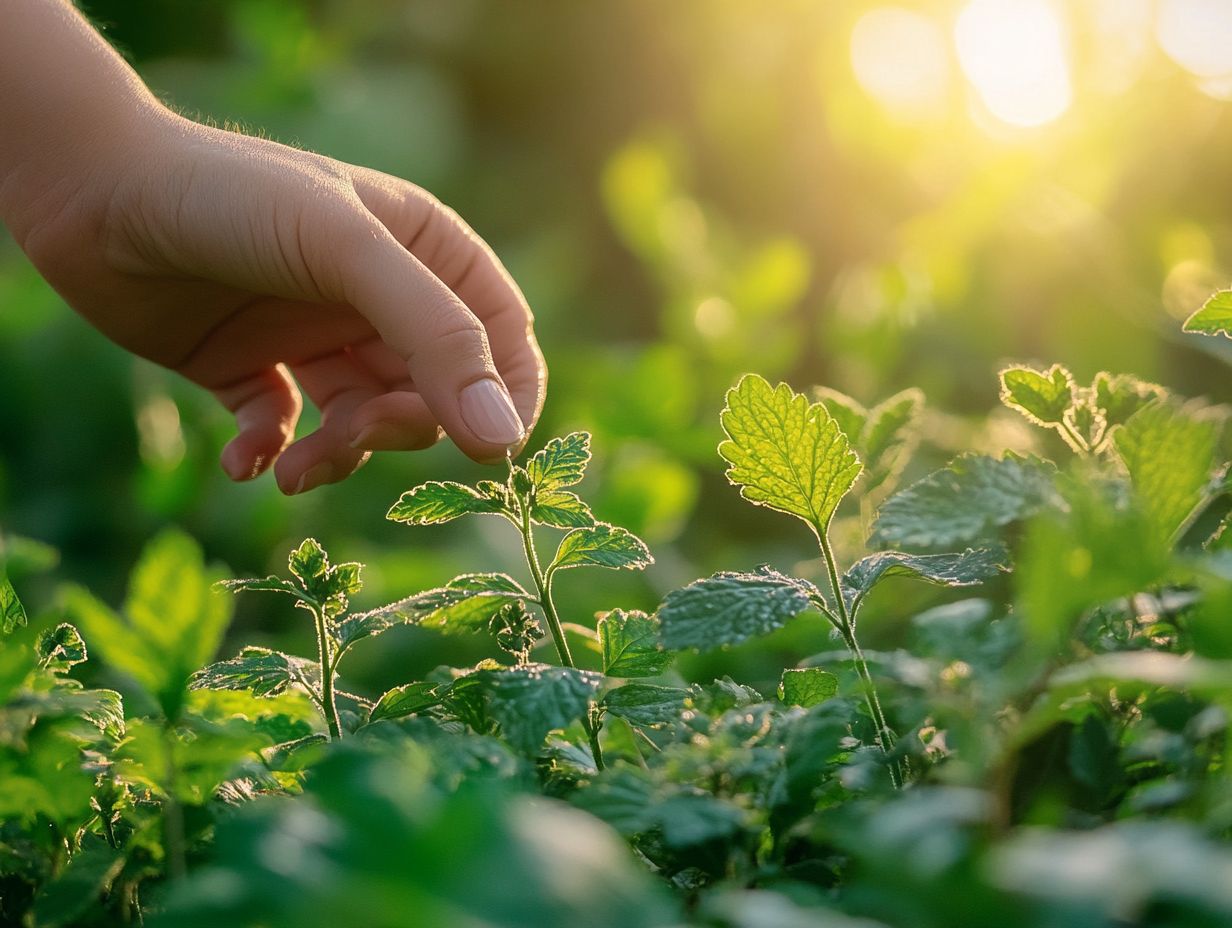
Consulting with experts or joining herb identification groups will boost your foraging skills dramatically! You gain valuable information about local edible and medicinal plants, including harvesting tips and essential foraging guidelines for safety and sustainability.
Learning from local plant enthusiasts gives you insights that often elude books or online resources, such as firsthand accounts of seasonal variations, habitat considerations, and traditional uses. This immersive education broadens your understanding of herbalism and deepens your appreciation of nature’s abundant offerings.
Joining a community of fellow foragers creates a supportive environment where sharing experiences and techniques fosters personal growth. Participate in workshops and events to connect with others who share your interests, creating a network that inspires and enriches your journey into the fascinating world of foraging.
5. Always Double Check Before Consuming
Foraging safety is essential. Always double-check your finds before eating. It s vital for avoiding poisonous look-alikes! This practice is especially important when distinguishing edible species from poisonous impostors that may look similar, such as dandelion roots or stinging nettle.
Get field guides specific to your region for invaluable insights, while mobile apps for plant identification help you verify discoveries on the go. Connecting with local farms can also provide access to seasoned foragers eager to share their expertise and help identify any questionable specimens.
Engaging with the foraging community is equally advantageous. By participating in local workshops or discussion groups, you can exchange experiences and learn sustainable foraging techniques, significantly reducing the risks associated with misidentifying plants.
What Are the Benefits of Identifying Wild Herbs?
Identifying wild herbs presents you with a great source of healthy nutrients while deepening your connection with the natural world. Learning how to identify edible plants in the wild heightens your awareness of environmental pollution and emphasizes the importance of preserving plant diversity.
By incorporating these wild herbs into your diet, you can elevate your culinary experiences while tapping into a rich reservoir of essential vitamins and minerals. Research shows that many wild herbs like dandelion, stinging nettle, and wild garlic boast higher antioxidant levels than conventional vegetables, helping you feel healthier.
Engaging in the collection and cultivation of these plants not only enriches your life but also helps our local ecosystems thrive. It promotes the practice of wildcrafting ethics, providing habitats for various species and decreasing reliance on industrial agriculture. Community gardening initiatives centered around these herbs encourage sustainability and foster social bonds. As neighbors unite to share knowledge and resources, they ultimately enhance their dietary diversity and create a more vibrant community.
How Can Wild Herbs Be Used for Medicinal Purposes?
Wild herbs like dandelion, wild garlic, and other medicinal weeds are treasure troves of medicinal properties, making learning about herbs crucial for unlocking their potential benefits.
These remarkable plants have been at the heart of traditional medicine and home remedies for centuries. Take dandelion leaves, for example; they re celebrated for their diuretic effects and can assist in detoxification. You might enjoy them tossed into a fresh salad or steeped into a soothing tea.
Wild garlic not only adds flavor but also helps your heart. By incorporating it into your meals, you re not just elevating taste; you re nurturing your heart health as well.
Research suggests that both of these herbs are packed with bioactive compounds that promote overall well-being, highlighting the value of weaving these earthy wonders into your daily routine through simple recipes and preparations.
What Are the Different Ways to Consume Wild Herbs?
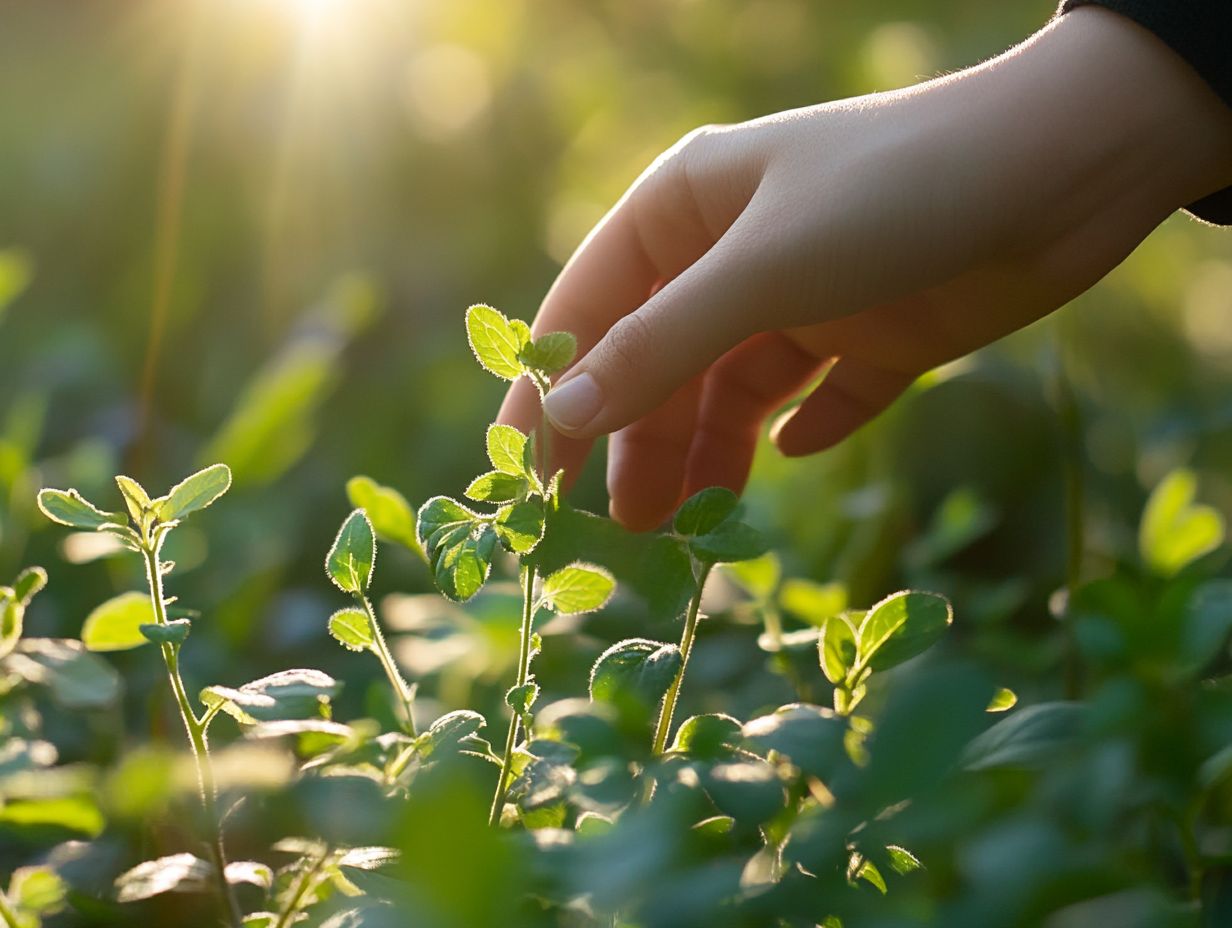
Wild herbs offer a world of culinary possibilities, allowing you to incorporate them into herb salads, wild food dishes, or even brew delightful herbal teas, enhancing both flavor and nutritional value. To make the most of these ingredients, it’s important to know how to identify safe wild edibles. Each method showcases unique flavors and nutritious greens that can wonderfully enhance your meals.
These vibrant additions can elevate everything from your homemade pasta to savory sauces, including wild plant vinegar, bringing a refreshing twist that store-bought herbs often lack. For example, when you finely chop some wild garlic or nettle and stir it into a creamy risotto, you introduce a depth and intrigue that transforms the dish entirely.
You can preserve these herbs by drying them or making infused oils. Both methods keep their flavors intact and extend shelf life.
As you begin to integrate them into your cooking, it s wise to start with small quantities. This allows you to gradually explore the different flavor profiles and discover potential pairings with seasonal ingredients. With a touch of experimentation, you ll be amazed at the delicious combinations you can create!
What Are the Safety Precautions When Identifying Wild Herbs?
Safety precautions are crucial when identifying wild herbs, as misidentification can lead to consuming poisonous plants. To enhance your skills, check out 5 ways to remember edible plant characteristics.
Always research thoroughly and consult local experts before foraging.
For novice foragers, it s crucial to familiarize yourself with common indicators of toxic species. Look out for irregular leaf shapes, unusual colors, or the presence of milky sap.
When venturing out alone, always exercise extreme caution. Consider bringing along a reliable guidebook or a plant identification app for reference.
Cross-check your findings against multiple sources, such as reputable websites or community foraging groups, to ensure accuracy before deeming any plant safe for consumption.
Bringing a seasoned forager can provide invaluable insights and significantly enhance your safety during your exploration.
How Can One Preserve and Store Wild Herbs?
Preserving and storing wild herbs is essential for reaping their benefits all year long. You can enhance their longevity and flavor through methods like drying, freezing, or crafting wild plant vinegar, which also aids in effective root preparation.
Understanding the optimal times for harvesting is crucial as well. Many herbs should be collected just before they flower to capture their peak potency and flavor.
Utilizing seasonal harvesting calendars will guide you in timing your collection. This ensures you gather herbs when their fragrant compounds are at their richest.
Once you’ve harvested, employing proper storage methods like using airtight containers or dark glass jars will help maintain the quality of these natural treasures.
This shields them from moisture and light that could diminish their freshness. By adopting these preservation techniques, you’ll fully appreciate the essence of wild herbs throughout the year.
What Are the Potential Risks of Misidentifying Wild Herbs?
Misidentifying wild herbs can lead to serious health risks, including poisoning. This highlights the crucial need for you to learn how to identify common wild edibles and consult with a local plant expert before consuming anything.
Many individuals have unknowingly harvested toxic plants, mistakenly believing they were safe alternatives. This has led to severe reactions or even hospitalization.
For instance, there was a case in a local community where a group of friends foraged what they thought were edible wild mushrooms, only to find themselves grappling with symptoms of acute liver failure.
In such scenarios, education is paramount. Local workshops and guided foraging tours are invaluable resources that can help you safely identify native flora and teach essential skills.
Community-driven programs not only emphasize the joy of foraging but also act as protective measures. They foster a well-informed citizenry that can make safe dietary choices.
Frequently Asked Questions
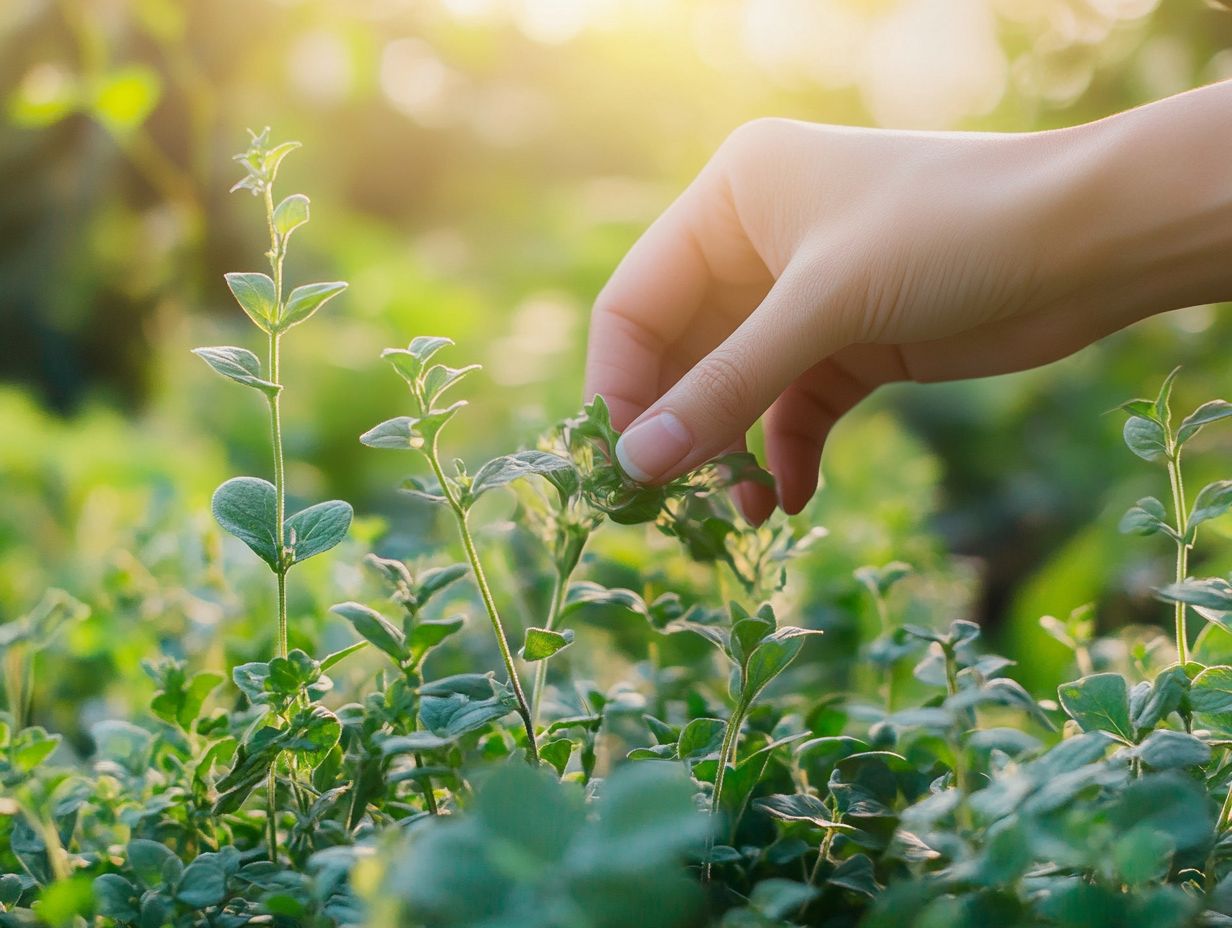
What are some tips for identifying wild herbs?
1. Pay attention to plant characteristics: Look at the color, shape, and size of leaves, flowers, and stems to help narrow down the possible species.
2. Smell and taste: Wild herbs often have distinct smells and tastes that can aid in identification. For more detailed information, refer to our guide on common wild herbs: identification tips. However, be cautious as some plants can be toxic.
3. Observe the environment: Different herbs grow in different environments, so take note of where the plant is growing (e.g., in the sun or shade, near water or in dry soil). For more insights, check out these foraging techniques for local herbs.
4. Consult a guidebook or expert: Use a trusted guidebook or seek the advice of a knowledgeable expert to help with identification.
5. Always double-check: Before consuming any herbs, make sure to double-check your identification to avoid any potential risks.
Can I use an app to identify wild herbs?
Yes, there are several apps available that use visual recognition technology to help identify plants. However, it’s always best to cross-reference with a guidebook or expert to ensure accuracy.
Are there any safety precautions to take when identifying wild herbs?
Always wear gloves when exploring unfamiliar plants. Your safety comes first!
Research plants that look similar but may be poisonous. Avoid areas where plants might have been sprayed with pesticides.
What are some common mistakes to avoid when identifying wild herbs?
One mistake is assuming that all plants with similar traits belong to the same species. Carefully compare the plant with a guidebook or expert before making a determination.
Another error is relying solely on taste or smell for identification. Some plants can have similar scents but very different properties.
Are there any specific tools I should use for identifying wild herbs?
Use a small shovel to check the roots of plants. A magnifying glass helps you see tiny details.
A plant identification app or guidebook is also a useful tool to have on hand.
What should I do if I accidentally ingest a toxic plant while identifying wild herbs?
Get medical help right away! If you can, take a sample of the plant for identification.
Always exercise caution when consuming wild herbs, and only eat plants that have been confirmed safe.

